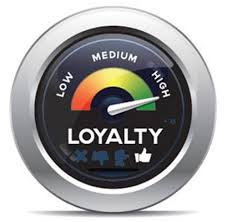Growing your revenue is very closely related to the growth of your team.
If you want to grow out of your current workload (and your current role), you may need to grow your top-line revenue to the point that you can hire..
For example, if you’re doing all of the review work, but as a firm owner, you don’t want to continue doing that, but you’re not ready to bring on an additional reviewer, then revenue growth can get you there so you can stop doing something that you find boring or unpleasant. This will free you up to hopefully do work that is more valuable for your clients..
A revenue goal can act as your hiring trigger point. Once you meet a certain sales goal, you know you can commit to making a new hire. Having a trigger point can take the emotion out of growth.
Getting your pricing strategy right is the most effective way to grow that top-line revenue.
With the right pricing, you may be able to increase your revenue dramatically. (It also can decrease your number of clients and therefore decrease your man-hours).
Accountants are notorious for underpricing their clients. We see it all the time. Pricing is one of those things that is central to the success of the practice because it has so many ripple effects. For instance, If your prices are too low, you probably have too much work on your plate, which means your staff also have too much work on their plates. Overwork can cause your staff to leave. Turnover is very expensive, etc….you get the picture.
In our experience, clients are way more service sensitive than fee sensitive. If you have fee sensitive clients, you might need to find some different clients.
Most clients are value-sensitive. Your pricing needs to be in alignment with the service expectations of your clients. You want the clients who appreciate the service you’re providing, and you want to have the capacity to demonstrate that value. The best clients are the ones who want more than just getting the compliance piece done and who want more of the insight that an accountant can have, and they’re willing to pay for that service. But when you undercharge, you’re not giving yourself the capacity to provide that level of service for the very people who are willing to pay for it.
It’s like buying a car. You could buy a Hyundai or a BMW. They do the same basic thing. Either one will get you from point A to point B. But there’s a huge difference in the price. The people who want the Hyundai aren’t going to expect all the bells and whistles that come from a BMW. But the people who want the BMW are generally happy to pay the extra cost for the options they want.
Getting your pricing right isn’t a paint-by numbers approach.
Every market is different. Every client is different. Every provider offers a service that’s slightly different. There is no one-size-fits-all pricing structure. It’s up to every practitioner to feel their way into their optimal pricing model. When you first decide that you need to charge what you’re worth, it’s important to look at the value pricing model.
We recommend that you do some market research and learn the rates. We also advise our clients to think about what their clients value.
You can start by increasing fees with new clients and get a feel for what people are willing to pay. Once you feel comfortable, roll out price increases for your existing clients. A little analysis will show you how much you can go up and how many clients you can lose to earn the same amount in gross revenue. I promise you won’t lose as many clients as you might imagine.
You can read all about how to scale your firm in our new e-book, Scaling Your Cloud Accounting Practice. This has practical tips even if your firm isn’t a virtual practice. You can download the free e-book or email us your mailing address at info@poegroupadvisors.com if you want a free physical copy.
Cheers!
Brannon Poe, CPA







